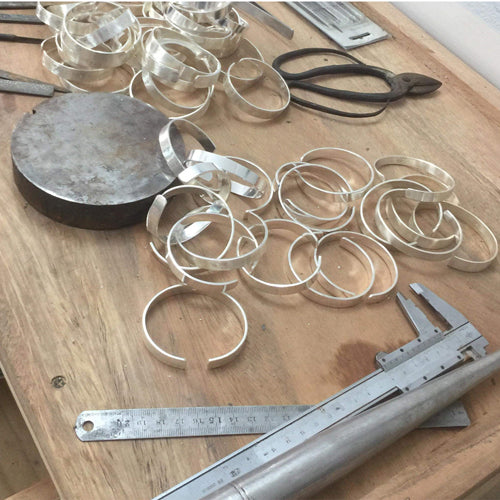Cut OFF for all Christmas Orders is the 22ND DEC 2025 by 12PM MidDay
The Evolution of Silver Jewellery

Silver is one of the most important metals used by mankind and at times has been valued more highly than gold. It is one of the seven metals of antiquity and archaeologists have found evidence of silver smelting dating before 4000 BC. Silver was essential for trading on the Asian spice route and minted silver coins were used by the Romans.
Ductile and malleable, silver is one of the few metals that can be beaten into delicate thin leaf or pulled to make strong wires. Combined with its high lustre and resistance to oxidisation, silver has long been prized by jewellery makers and wearers alike. It is also believed to aid healing and has anti-bactericidal properties.
The art of silver-making has evolved over time, incorporating new techniques, designs and symbolism along the way to result in the range of beautiful and varied silver jewellery available today.
In Celtic times, those of high status wore torqs formed from twisted silver. Centuries later, this style forms the current trend for twisted torque bangle and solid silver torque bangles. The Celtic influence can also be seen in braided bangles and the ever-popular stylised Celtic knot design such as in this sterling silver Celtic dragon pendant.
In 1300, King Edward I ordered that all silver articles must meet the 92.5% Sterling Silver standard and jewellery was used by medieval nobility to indicate their wealth. Pendants would be worn as amulets with scorpion pendants and lion pendants symbolising protection and strength. Rings were important as a talisman or sign of office. During his reign in the 1500s Henry VIII owned hundreds of rings and wore them to demonstrate his royal status. Modern trends are also for substantial solid silver rings that make a statement. Spinning rings help to reduce stress for the wearer.
During the 1800s silver was used to create functional objects such as the Duke’s spoon that recently caused such a stir in the Regency drama, ‘Bridgerton’. There was high demand for fine British silverwork which became renowned for its quality and clean lines. This style was embraced by jewellery makers; an influence which can be seen today in classic designs such as plain solid silver bracelets.
In the early Victorian period intricate silver jewellery incorporated natural designs like this Sterling Silver Paisley Bangle. Highly polished silver was used as a setting for gemstones such as turquoise and amethyst and the popularity of gemstone earrings continues today. Prince Albert is said to have introduced the tradition of the Christmas pudding silver sixpence. Whoever found the sixpence believed they would have wealth and good fortune for the year to come.
The Industrial Revolution saw the mass production and devaluing of silver jewellery. However, the late 19th Century Arts and Craft Movement saw a return to craftsmanship. Today, items such as Sterling Silver Woven Pattern Cuff Bangles combine traditional techniques with a high level of skill.
Following the 2020 series ‘Normal People’, silver chains such as strong curb chains and classic Figaro chains have become exceptionally popular and ‘Connell’s chain’ has its own Instagram account.
Once more, hand-crafted silver jewellery is growing in reputation and reclaiming its rightful place as a sought-after item. For quality, beauty and affordability, silver jewellery is second to none.